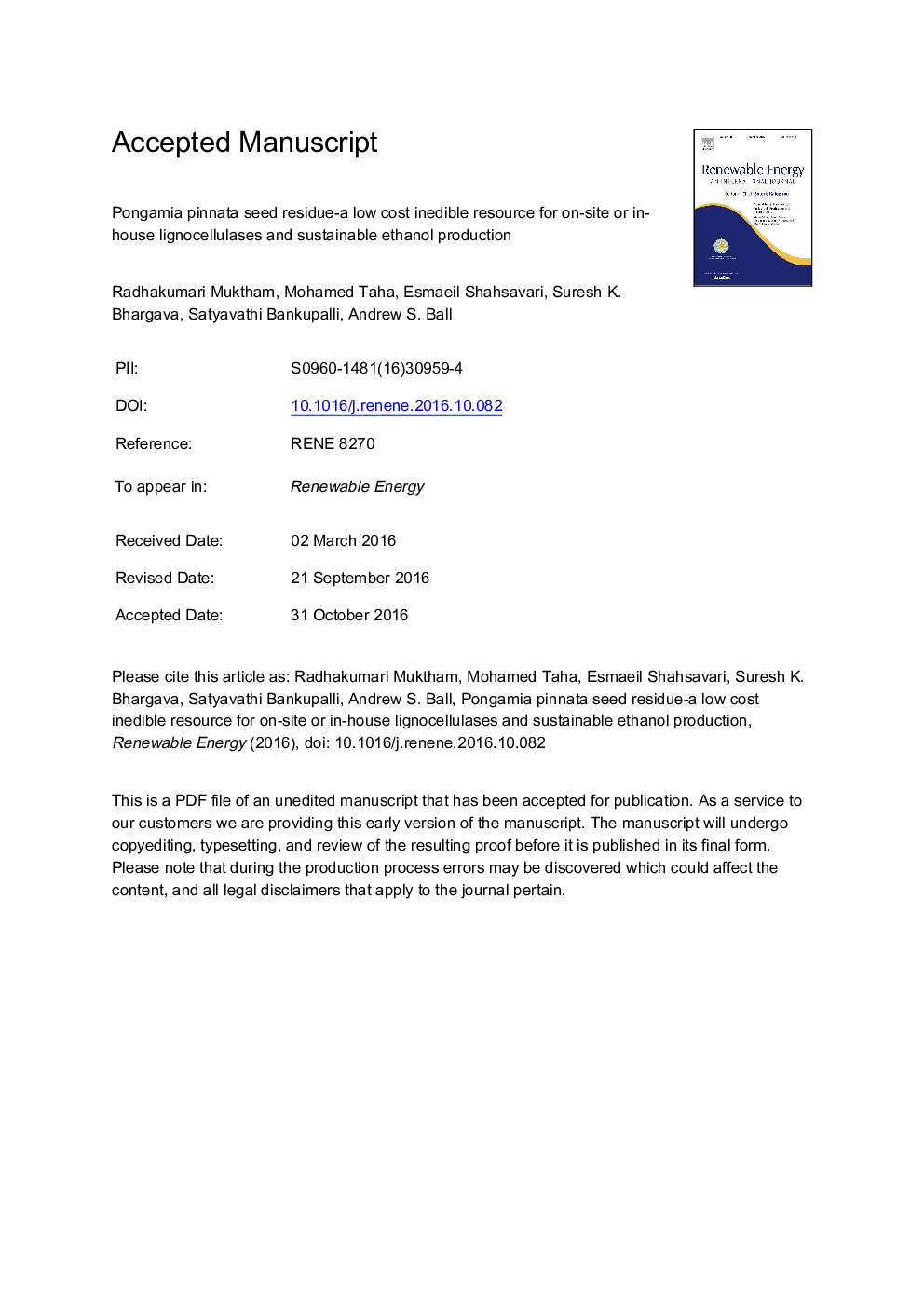| Article ID | Journal | Published Year | Pages | File Type |
|---|---|---|---|---|
| 4926608 | Renewable Energy | 2017 | 20 Pages |
Abstract
Lignocelluosic biomass represents a promising feed stock for biofuels production. However currently the costs associated with lignocellulases represent a key limiting factor in the development of biomass conversion process. The aim of this work was to exploit Pongamia pinnata seed residue, a cheap inedible bioresource, for both lignocellulases and ethanol production. Spingomonas echinoides and Iprex lacteus were selected as novel sources of lignocellulases during solid state fermentation. Both organisms produced an array of lignocellulases (exoglucanase, endoglucanase, xylanase and laccase). Subsequent hydrolysis of the seed residue for sugars production using this crude enzyme from S. echinoides and I. lacteus were compared with those produced using commercial cellulase from Aspergillus niger (10 U gâ1), resulted in sugars yields of 233, 302 and 330 mg gâ1, respectively. Ethanol yields of 81.5, 104.5 and 157.6 mg gâ1 and ethanol concentrations of 4.0, 5.3 and 7.9 mg mLâ1 were achieved from the fermentation of the three hydrolyzates using Saccharomyces cerevisiae. The study demonstrated the feasibility of using the seed residue for enzyme preparation and its subsequent application in hydrolysis of the same seed residue and the potential of using the hydrolysis product for ethanol production.
Related Topics
Physical Sciences and Engineering
Energy
Renewable Energy, Sustainability and the Environment
Authors
Muktham Radhakumari, Mohamed Taha, Esmaeil Shahsavari, Suresh K. Bhargava, Bankupalli Satyavathi, Andrew S. Ball,
